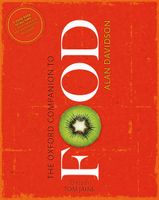Advertisement
Mastic
Appears in
Published 2014
When the stems of the bushes are wounded, even slightly, mastic exudes as a clear sticky substance. In cultivation, which takes place particularly in the Aegean island of Chios, vertical incisions are made in the stems during the summer, and the oval ‘tears’ of dried resin, ranging in size from 0.5 to 2 cm (0.25–0.75"), are collected shortly afterwards. The best grade is taken directly from the plant; a second grade is scraped from flagstones arranged around its base.


